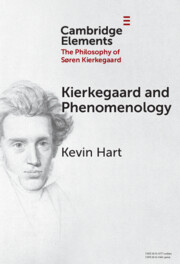Refine search
Actions for selected content:
326 results
Chapter 2 - Embodiment and Cognitive Extension in Art and Music
-
- Book:
- Cognition and the Arts
- Published online:
- 14 September 2025
- Print publication:
- 23 October 2025, pp 31-63
-
- Chapter
- Export citation
4 - A Somatic Enquiry into the Minuet
-
- Book:
- Haydn's Minuets and Eighteenth-Century Dance
- Published online:
- 12 September 2025
- Print publication:
- 02 October 2025, pp 137-176
-
- Chapter
- Export citation
21 - Self and Experience
- from Part IV - Body, Emotion, Self, and Experience
-
-
- Book:
- The Cambridge Handbook of Psychological Anthropology
- Published online:
- 22 October 2025
- Print publication:
- 25 September 2025, pp 505-528
-
- Chapter
- Export citation
9 - Encrusted in Ancestors
-
-
- Book:
- Relief in Greek, Roman, and Late Antique Art
- Published online:
- 11 October 2025
- Print publication:
- 25 September 2025, pp 288-320
-
- Chapter
- Export citation
20 - Psychological Anthropology and the Moral/Ethical Turn
- from Part IV - Body, Emotion, Self, and Experience
-
-
- Book:
- The Cambridge Handbook of Psychological Anthropology
- Published online:
- 22 October 2025
- Print publication:
- 25 September 2025, pp 483-504
-
- Chapter
- Export citation
4 - Phenomenological Foundations
- from Part I - Theoretical Foundations
-
-
- Book:
- The Cambridge Handbook of Psychological Anthropology
- Published online:
- 22 October 2025
- Print publication:
- 25 September 2025, pp 90-113
-
- Chapter
- Export citation
4 - Interlude: Earliness as an Aesthetic Category
-
- Book:
- Anton Webern at the Dawn of Modernism
- Published online:
- 21 August 2025
- Print publication:
- 04 September 2025, pp 85-93
-
- Chapter
- Export citation
2 - Moving Moods
-
- Book:
- Anton Webern at the Dawn of Modernism
- Published online:
- 21 August 2025
- Print publication:
- 04 September 2025, pp 26-57
-
- Chapter
- Export citation

Kierkegaard and Phenomenology
-
- Published online:
- 16 August 2025
- Print publication:
- 11 September 2025
-
- Element
- Export citation
Introduction
-
- Book:
- Getting Lost in the Novel
- Published online:
- 26 July 2025
- Print publication:
- 07 August 2025, pp 1-24
-
- Chapter
- Export citation
2 - Darwin’s Reinach
- from Part I - Reinach and His Method
-
-
- Book:
- Reinach and the Foundations of Private Law
- Published online:
- 20 July 2025
- Print publication:
- 07 August 2025, pp 52-81
-
- Chapter
-
- You have access
- Open access
- HTML
- Export citation
1 - Promising, Owning, Enacting
- from Part I - Reinach and His Method
-
-
- Book:
- Reinach and the Foundations of Private Law
- Published online:
- 20 July 2025
- Print publication:
- 07 August 2025, pp 23-51
-
- Chapter
-
- You have access
- Open access
- HTML
- Export citation
Conclusion
- from Part 2 - Popular Subgenres
-
- Book:
- Getting Lost in the Novel
- Published online:
- 26 July 2025
- Print publication:
- 07 August 2025, pp 143-149
-
- Chapter
- Export citation
Introduction
-
-
- Book:
- Reinach and the Foundations of Private Law
- Published online:
- 20 July 2025
- Print publication:
- 07 August 2025, pp 1-20
-
- Chapter
-
- You have access
- Open access
- HTML
- Export citation
7 - Reinach on Personality and Representation
- from Part II - Reinach and Private Law Theory
-
-
- Book:
- Reinach and the Foundations of Private Law
- Published online:
- 20 July 2025
- Print publication:
- 07 August 2025, pp 166-188
-
- Chapter
-
- You have access
- Open access
- HTML
- Export citation

Getting Lost in the Novel
- Strategic Confusion in Eighteenth- and Nineteenth-Century British Fiction
-
- Published online:
- 26 July 2025
- Print publication:
- 07 August 2025

Reinach and the Foundations of Private Law
-
- Published online:
- 20 July 2025
- Print publication:
- 07 August 2025
-
- Book
-
- You have access
- Open access
- Export citation

Healing and the Invention of Metaphor
- Toward a Poetics of Illness Experience
-
- Published online:
- 17 July 2025
- Print publication:
- 31 July 2025
4 - Estranged from the World
-
- Book:
- Law and Inhumanity
- Published online:
- 20 June 2025
- Print publication:
- 17 July 2025, pp 67-84
-
- Chapter
- Export citation
Introduction
-
- Book:
- Law and Inhumanity
- Published online:
- 20 June 2025
- Print publication:
- 17 July 2025, pp 1-9
-
- Chapter
-
- You have access
- HTML
- Export citation
